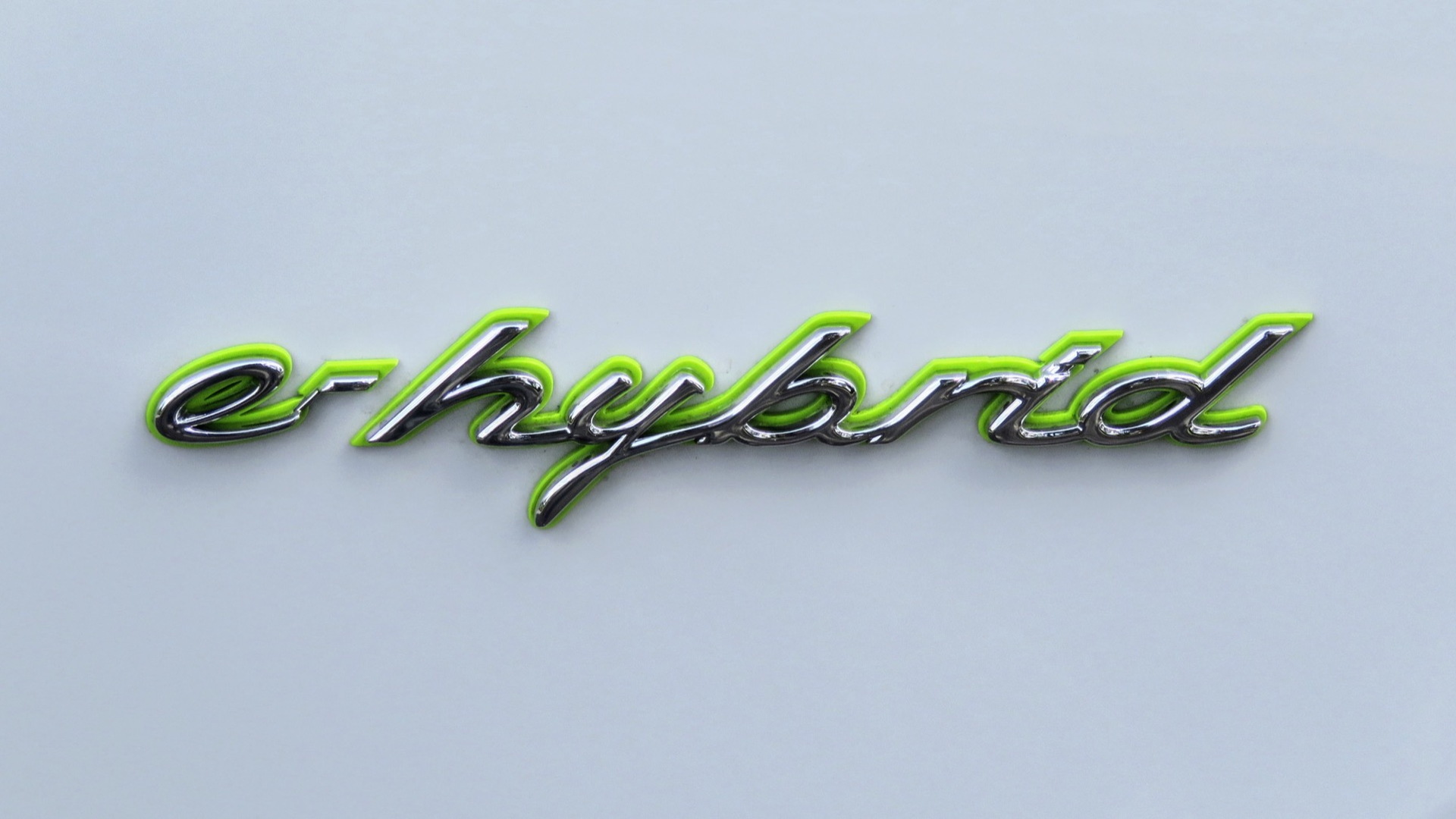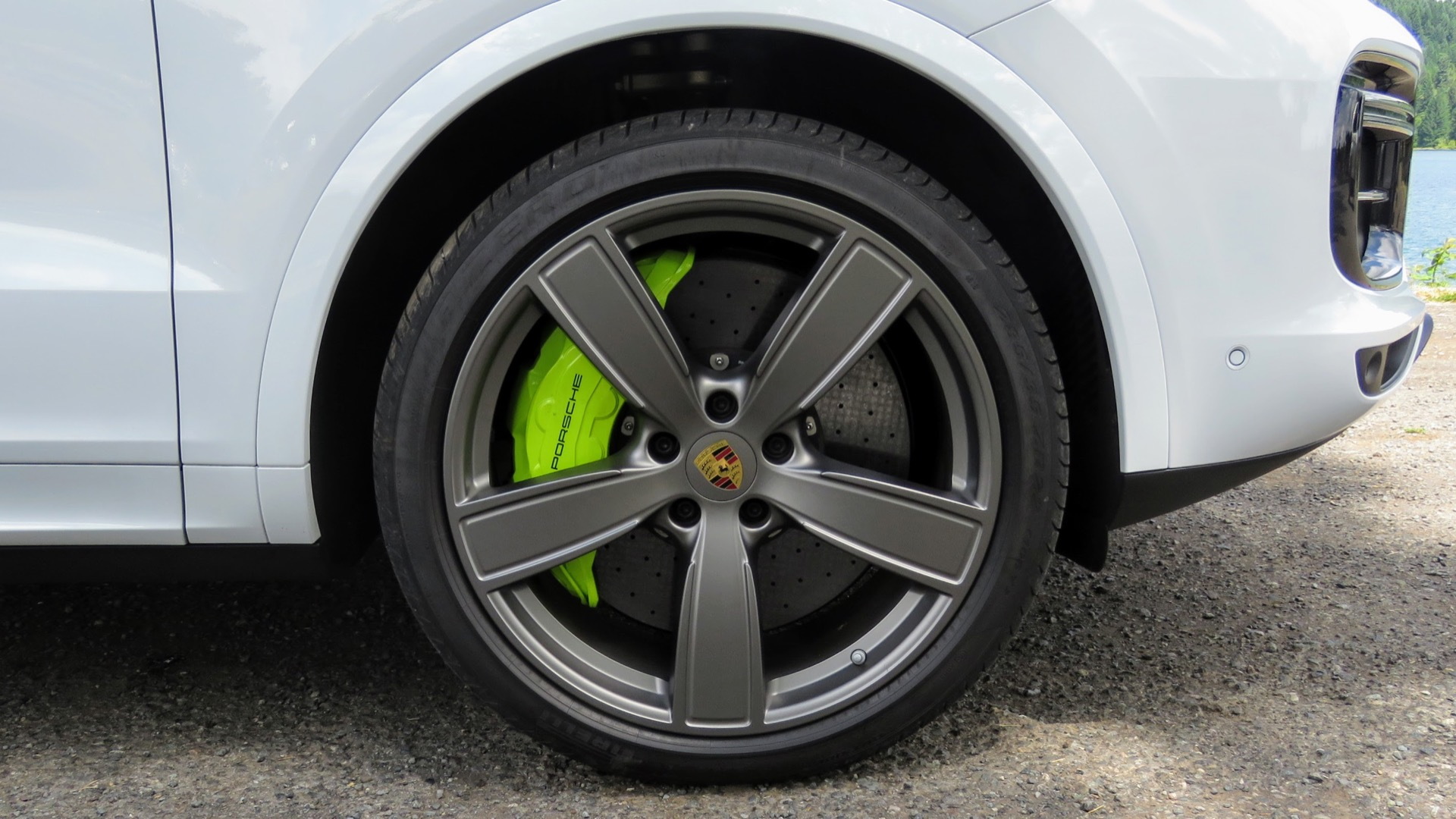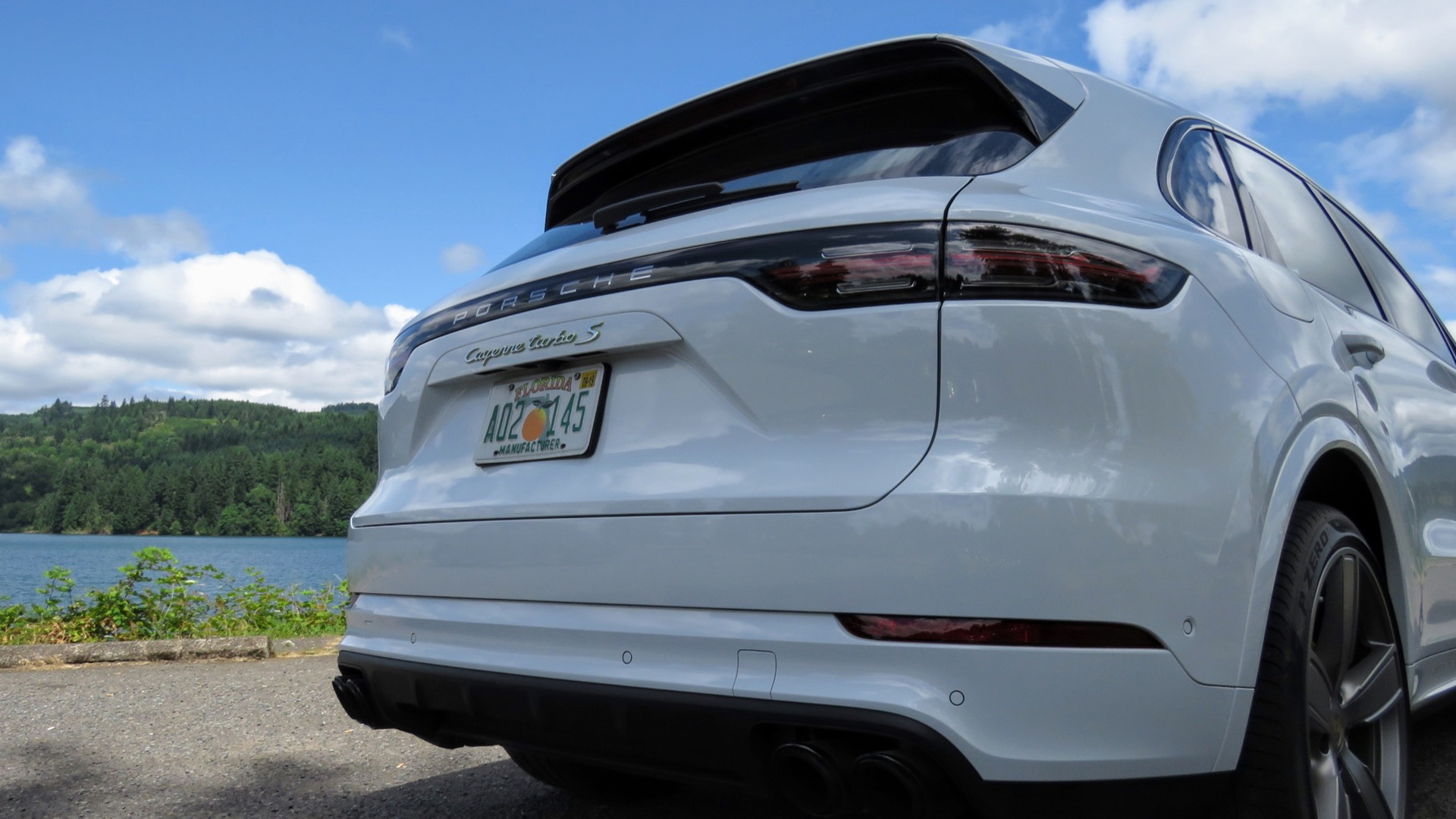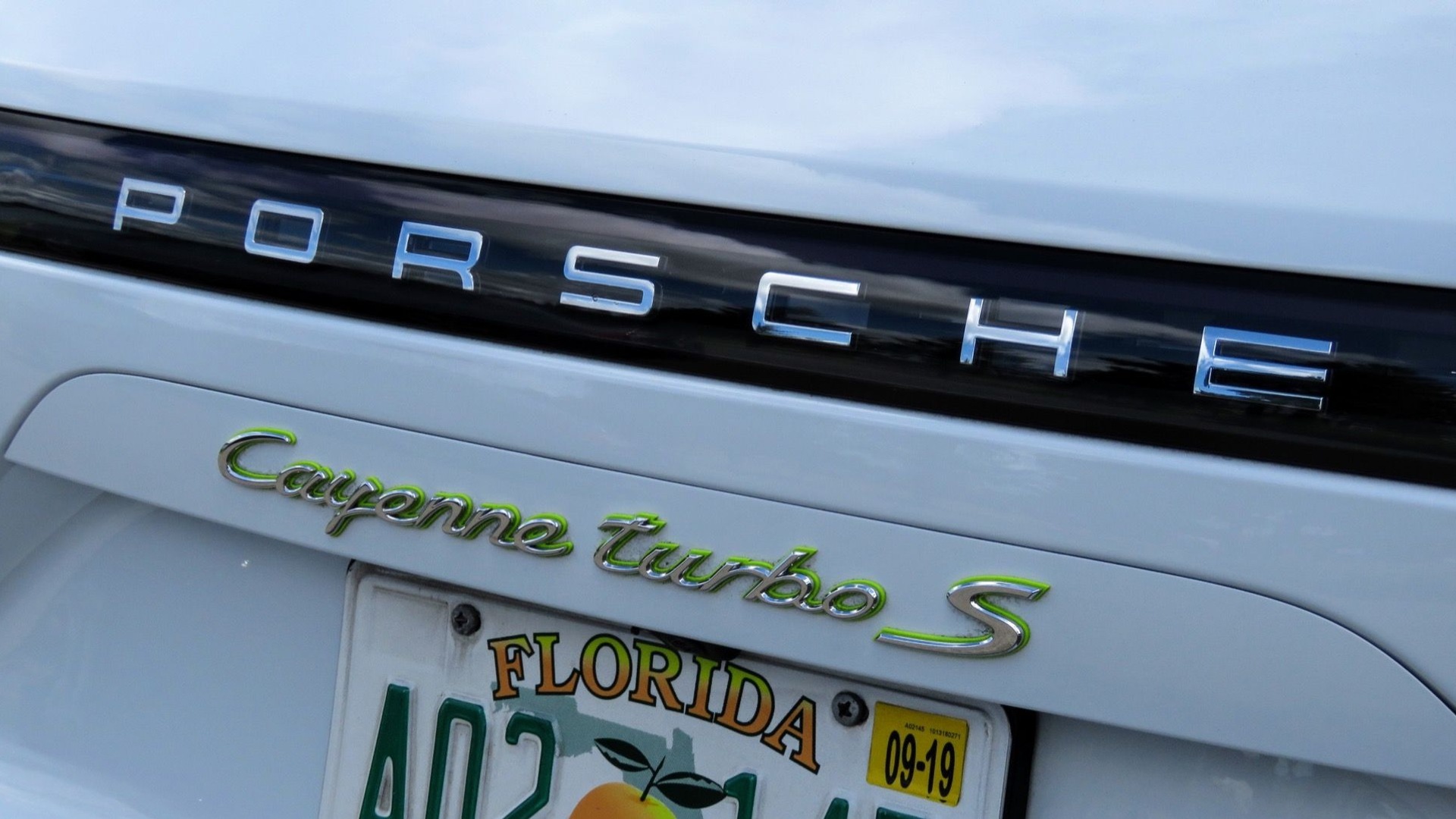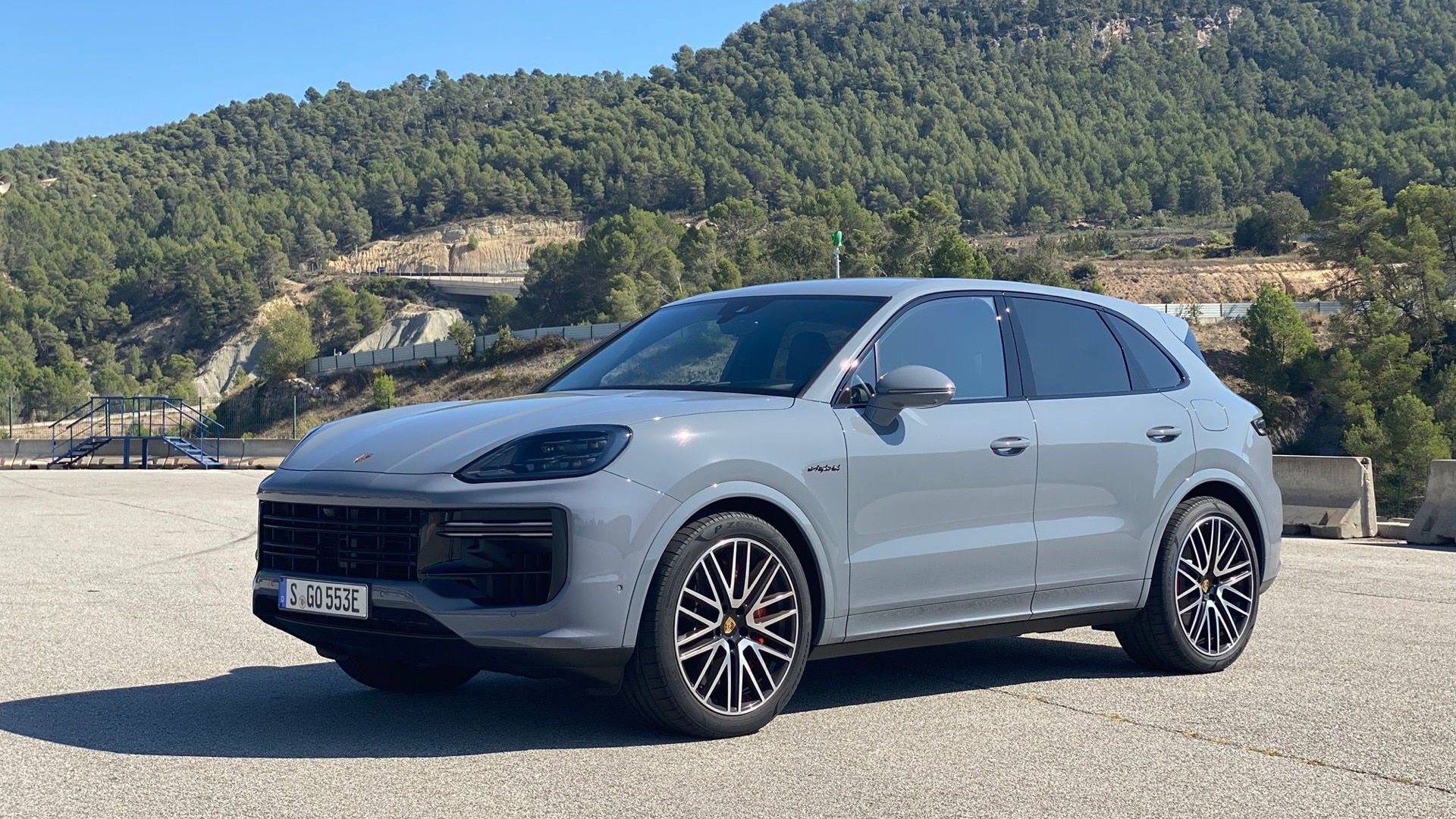The 2020 Porsche Cayenne Turbo S E-Hybrid has an undeniably impressive powertrain. It’s a symphony of gasoline and electric power that crescendos to a peak of 670 horsepower and 663 pound-feet of torque. The Cayenne Turbo S E-Hybrid’s powertrain is so remarkable that it often overshadows the rest of the SUV’s engineering, and that's a real shame, because the rest of the Cayenne’s mechanical bits are just as impressive.
For starters, the Cayenne Turbo S E-Hybrid comes standard with the Porsche Traction Management (PTM) system that uses an electronically controlled clutch to divvy power between the front and rear axles based on the needs of the driving situation. For instance, during performance driving, the power to the front is limited to allow the tires to gain more lateral traction. In off-road situations, the power goes where the grip is best.
PTM combines with Porsche Torque Vectoring Plus to allow the vehicle to not only shift power front to back, but also side to side. During performance driving, it brakes the inside rear wheel to help the vehicle rotate through corners. When exiting a corner, it works as a limited-slip differential to put the power to the pavement.
Every Cayenne Turbo S E-Hybrid ships standard with a three-chamber air suspension that boasts six different ride heights and variable spring rates. The system automatically adjusts its settings based on driving style, or the driver can adjust the system manually. At speeds greater than 130 mph, the system automatically drops to the "Low" suspension setting to maximize stability. At its highest setting, the air suspension provides 9.6 inches of ground clearance to clear off-road obstacles.

Porsche Cayenne chassis control
Also added to ensure the Cayenne Turbo S E-Hybrid handles like a proper Porsche is an advanced 48-volt electromechanical roll-stabilization system that can change the torsional rigidity of the front and rear anti-roll bars. Each anti-roll bar is split into two parts and the system's center-mounted pivot motor is capable of rotating each section in different directions. This helps greatly reduce body lean through corners.
All of these system are overseen by Porsche 4D-Chassis Control. This system monitors the aforementioned individual systems and adjusts them to match and even anticipate the driving situation and environment.
The brakes used on the Porsche Cayenne Turbo S E-Hybrid are nothing short of supercar special. They’re internally vented and cross-drilled carbon-ceramic discs that measure 17.3 inches at the front and 16.1 inches at the rear. The calipers have 10 pistons at the front and four at, ensuring the Cayenne Turbo S E-Hybrid stops as quickly as it accelerates.
The only optional chassis tech on the Cayenne Turbo S E-Hybrid is rear-axle steering that helps with high-speed stability by turning the rear wheels in the same direction as the fronts. Below 50 mph, the rear wheels turn opposite of the fronts to make the Cayenne more agile and reduce its turning radius from 39.7 to 37.7 feet.
The powertrain in the Cayenne Turbo S E-Hybrid is impressive, but it's the chassis tech that makes it truly special to drive.


